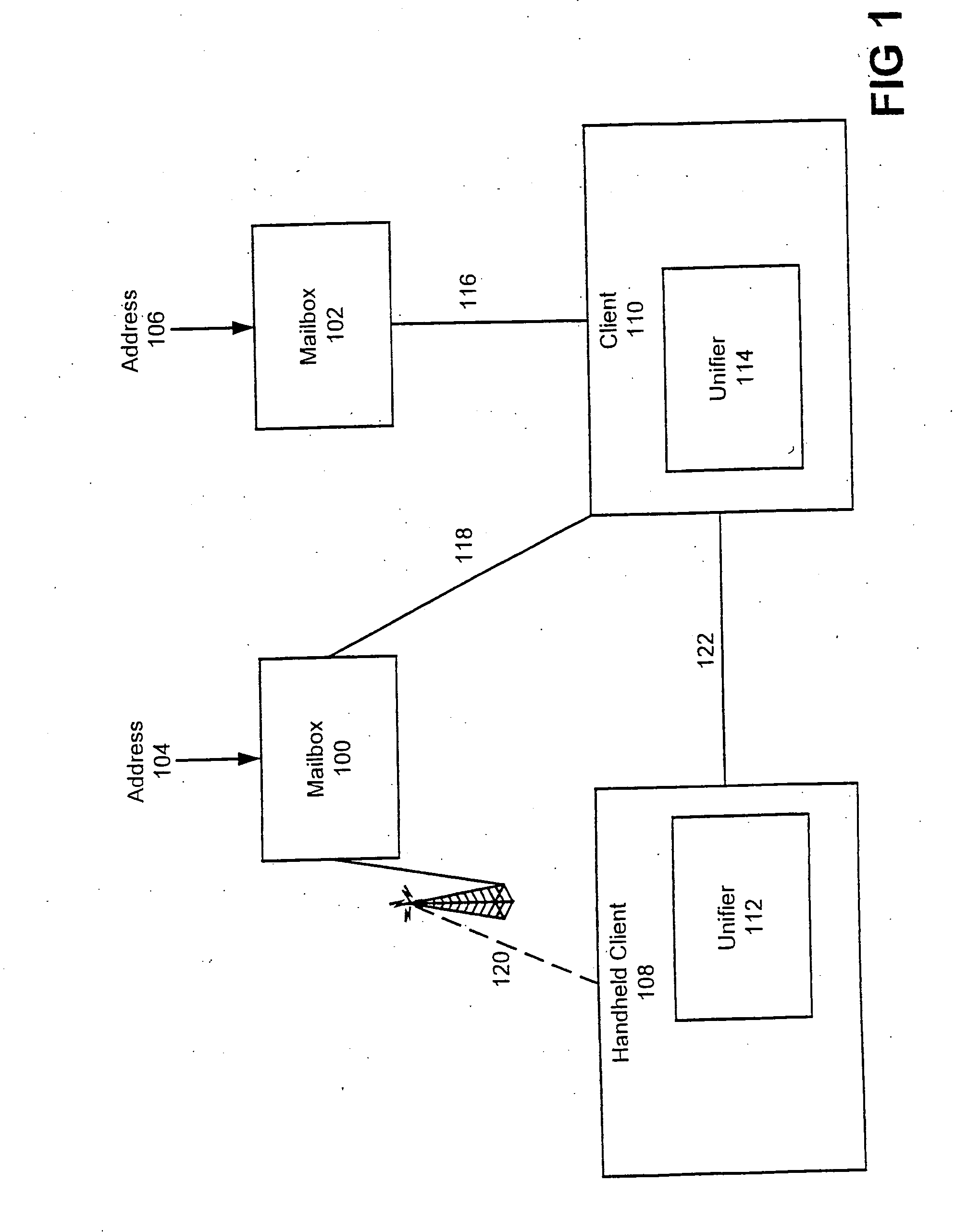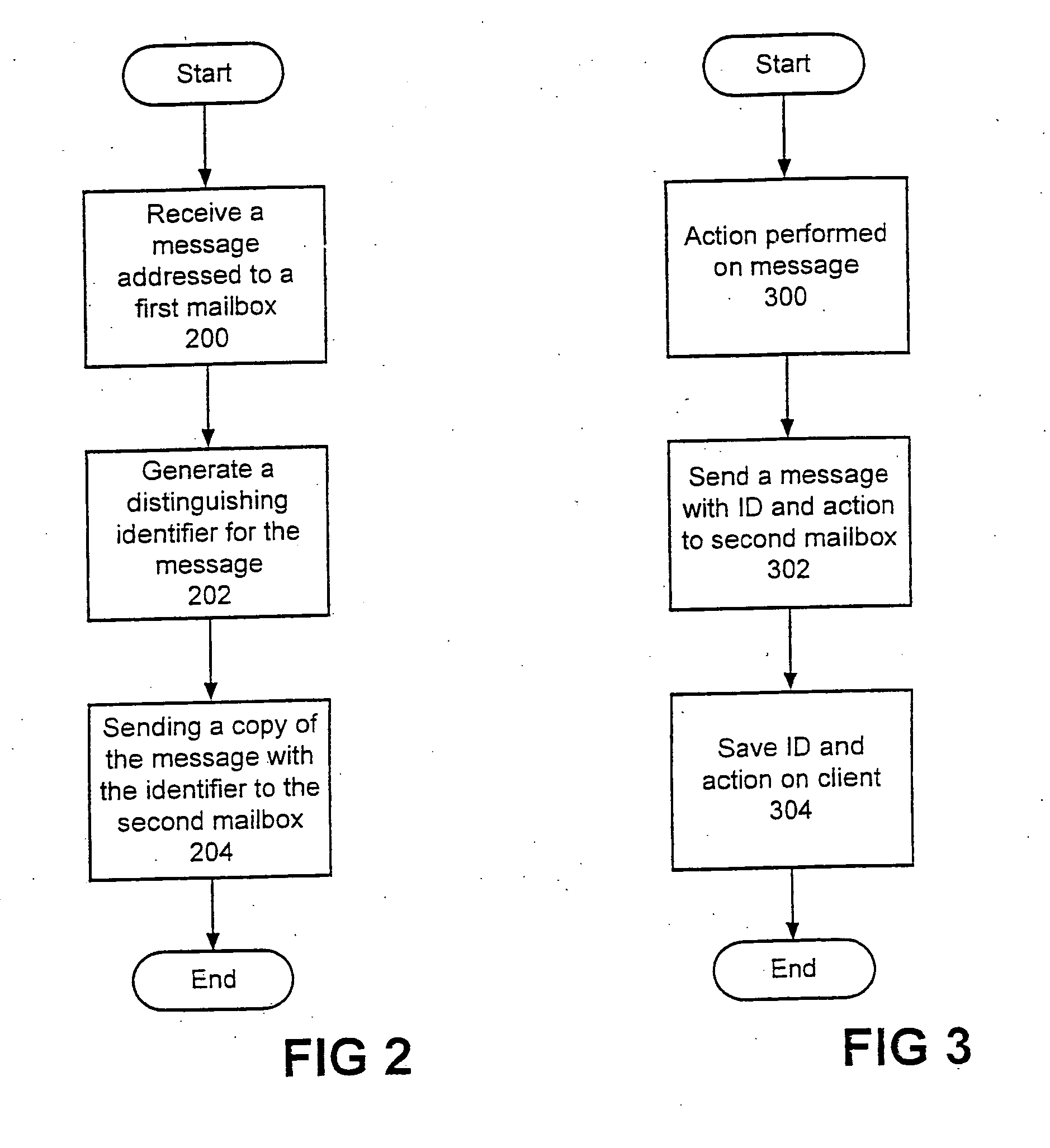Method and apparatus for maintaining a unified view of multiple mailboxes
a mailbox and unified technology, applied in the field of electronic messaging systems, can solve the problems of high cost of use of communication channels, and achieve the effects of low cost, high cost, and high communication cos
- Summary
- Abstract
- Description
- Claims
- Application Information
AI Technical Summary
Benefits of technology
Problems solved by technology
Method used
Image
Examples
Embodiment Construction
A. Definitions
[0021] 1. Message
[0022] A message, also an electronic mail message or an e-mail, is a communiqué from a person and / or machine to another person and / or machine. A message is typically comprised of two parts: a header and a body. The header includes addressing and routing information. The body includes the contents of the message, e.g. a memo, a short note, an attachment, and / or other contents. Users can send messages to other users and / or machines by specifying an address for the recipient. Users can receive messages from other users and / or machines at their mailboxes.
[0023] 2. Mailbox
[0024] A mailbox is a storage area belonging to a user for messages. Each mailbox is associated with one or more electronic mail addresses that can be used to send the user messages. On the Internet, electronic mail addresses are comprised of a user identifier and a host name separated by an “@” symbol, e.g. “jdoe@corporate.com”. Each mailbox has one, or more, addresses associated with ...
PUM
 Login to View More
Login to View More Abstract
Description
Claims
Application Information
 Login to View More
Login to View More - R&D
- Intellectual Property
- Life Sciences
- Materials
- Tech Scout
- Unparalleled Data Quality
- Higher Quality Content
- 60% Fewer Hallucinations
Browse by: Latest US Patents, China's latest patents, Technical Efficacy Thesaurus, Application Domain, Technology Topic, Popular Technical Reports.
© 2025 PatSnap. All rights reserved.Legal|Privacy policy|Modern Slavery Act Transparency Statement|Sitemap|About US| Contact US: help@patsnap.com



